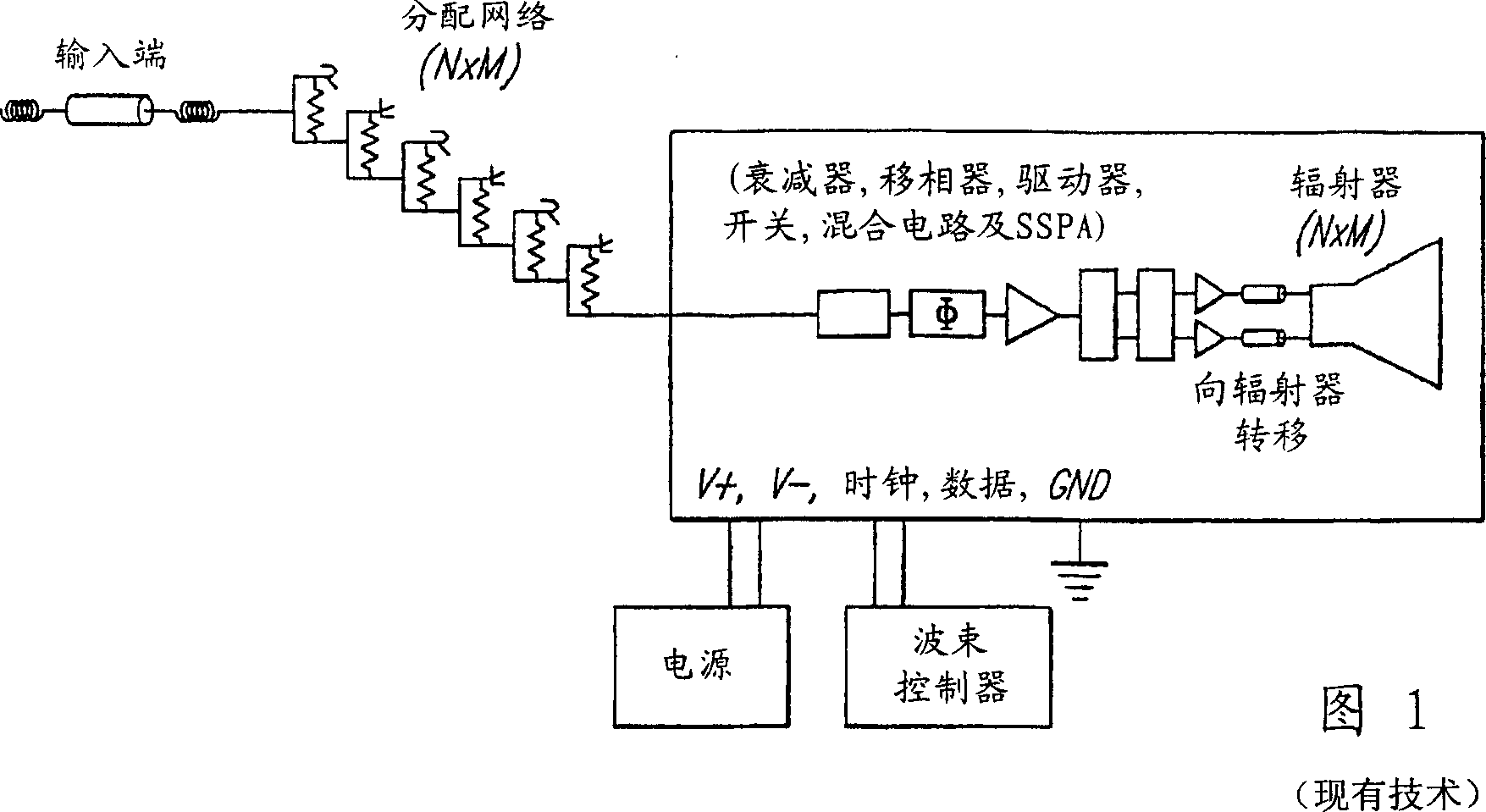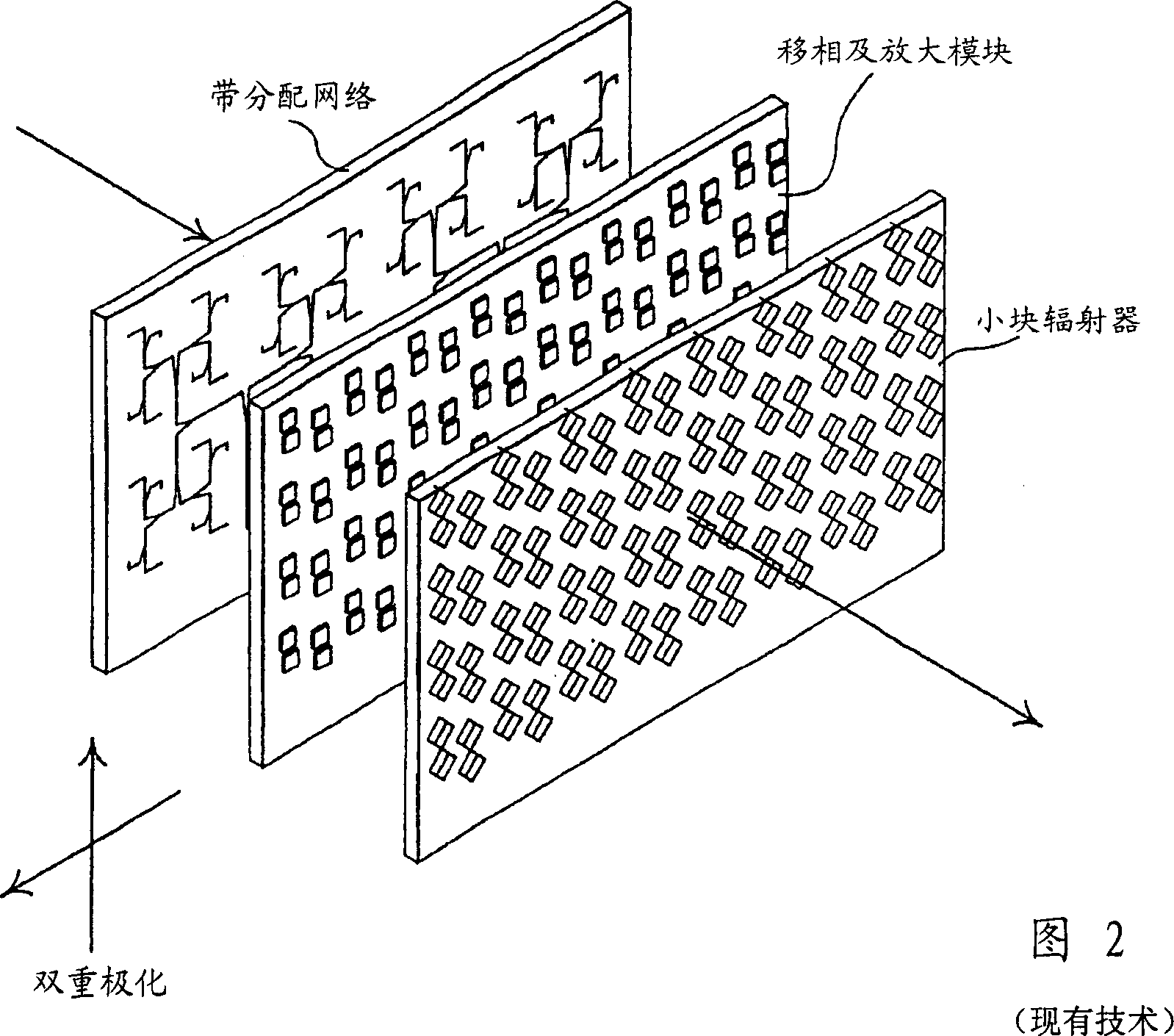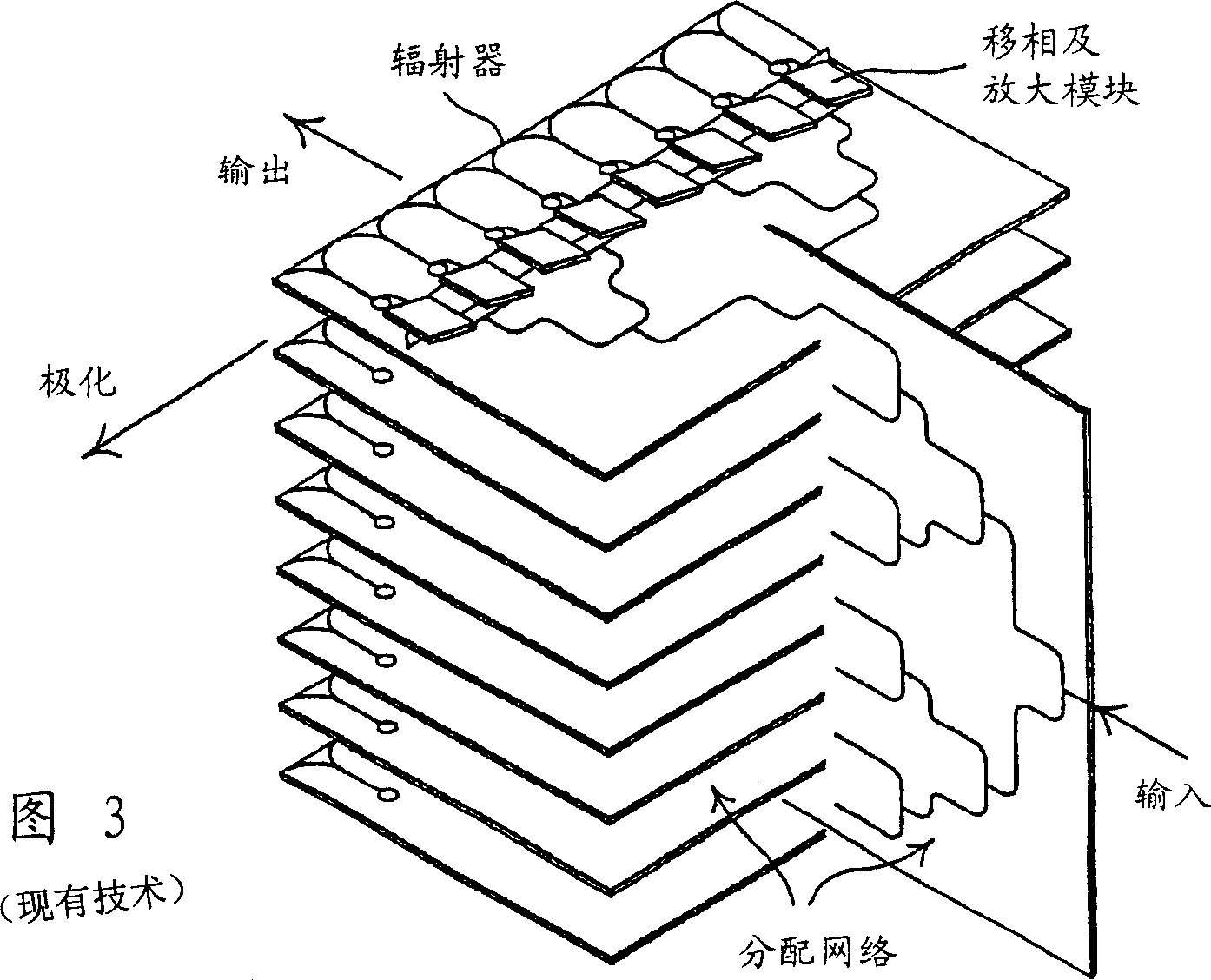Method and apparatus for forming millimeter wave phased array antenna
A phased array antenna and waveguide technology, which is applied in the directions of antennas, antenna arrays, connecting devices, etc., can solve problems such as the inability to accurately determine the deviation of the track of the series feeder beam.
- Summary
- Abstract
- Description
- Claims
- Application Information
AI Technical Summary
Problems solved by technology
Method used
Image
Examples
Embodiment Construction
[0027] The following description of the preferred embodiments is merely exemplary in nature and is in no way meant to limit the invention, its application or uses.
[0028] Referring to Figure 4, an antenna system 10 is shown in accordance with a preferred embodiment and method of the present invention. The antenna system 10 forms an antenna capable of operating at millimeter waves, more specifically, at 44 GHz (Q-band) and conforming to the MILSTAR protocol, and does not require prior knowledge of the next beam hopping frequency for use in MILSTAR applications. The antenna system 10 forms a dual beam system with 524 individual antenna modules spaced very closely together to be able to operate at millimeter wave frequencies, preferably around 44 GHz, and at scan angles up to (or beyond) 60 degrees Does not suffer from noticeable beaming and performance degradation. The antenna system generally comprises a chassis 11 within which is supported a feed network 12 and associated e...
PUM
 Login to View More
Login to View More Abstract
Description
Claims
Application Information
 Login to View More
Login to View More - R&D
- Intellectual Property
- Life Sciences
- Materials
- Tech Scout
- Unparalleled Data Quality
- Higher Quality Content
- 60% Fewer Hallucinations
Browse by: Latest US Patents, China's latest patents, Technical Efficacy Thesaurus, Application Domain, Technology Topic, Popular Technical Reports.
© 2025 PatSnap. All rights reserved.Legal|Privacy policy|Modern Slavery Act Transparency Statement|Sitemap|About US| Contact US: help@patsnap.com



